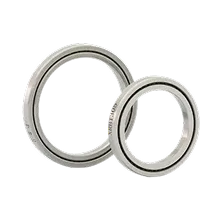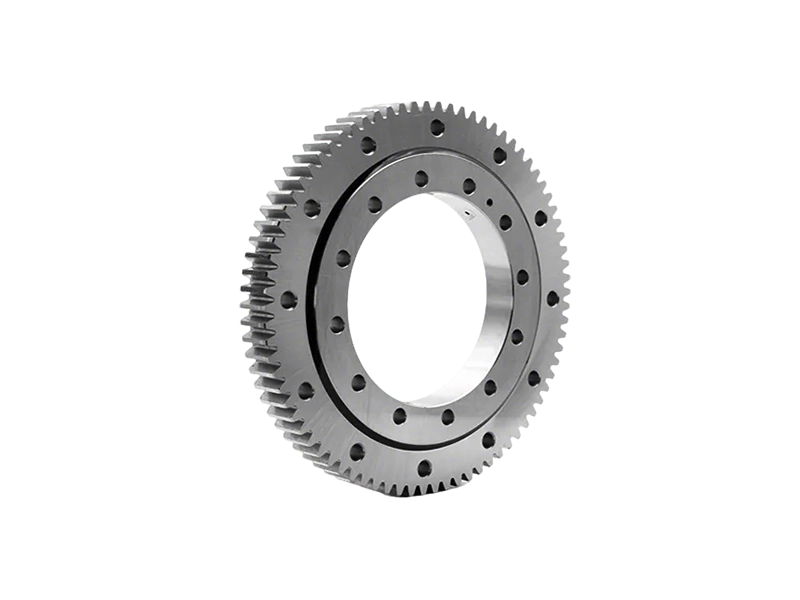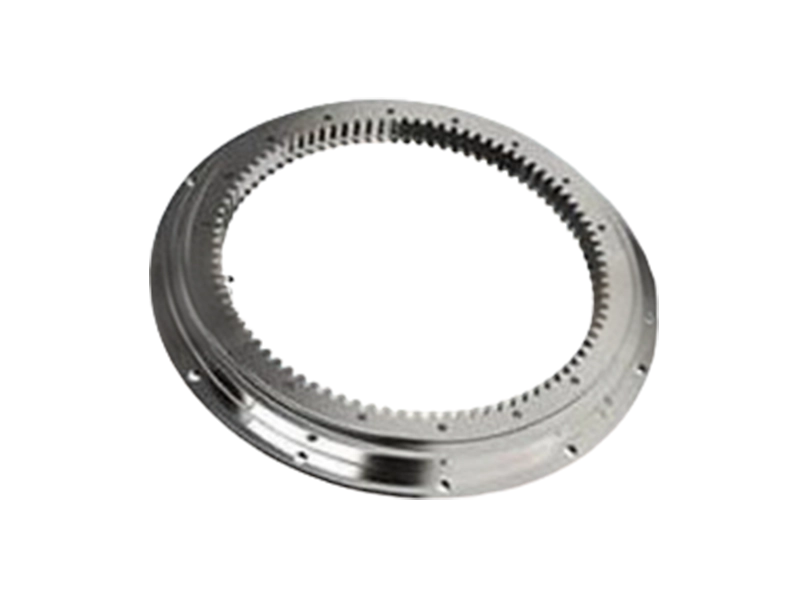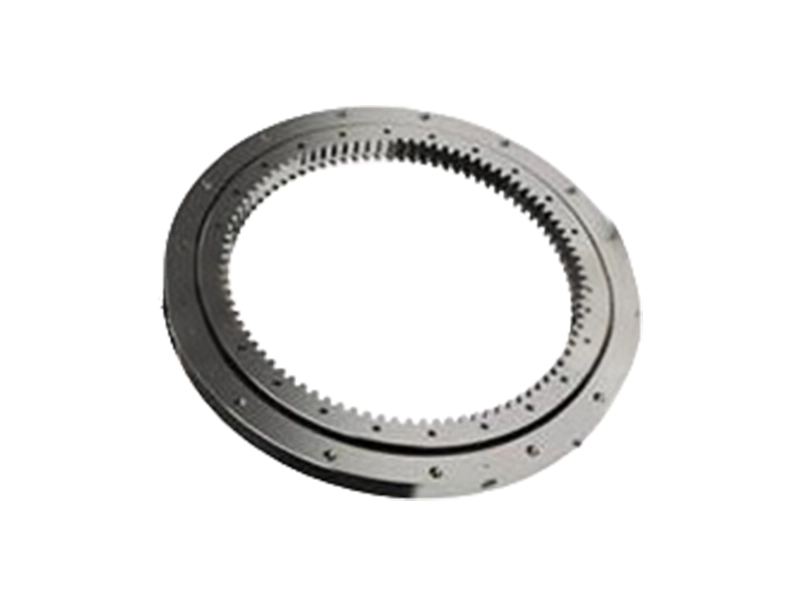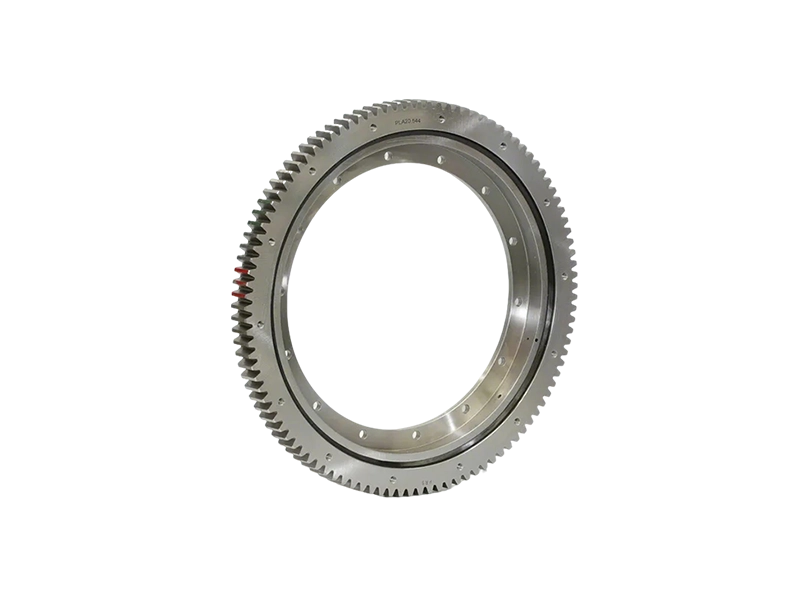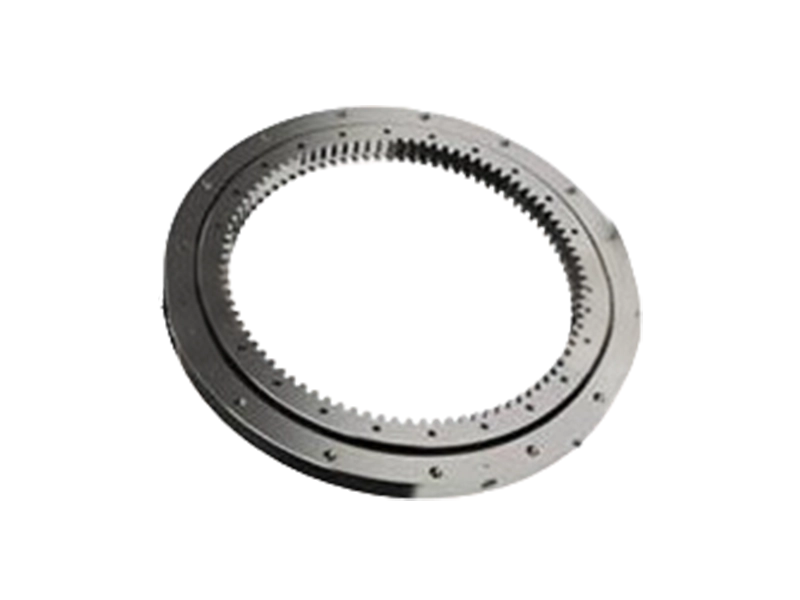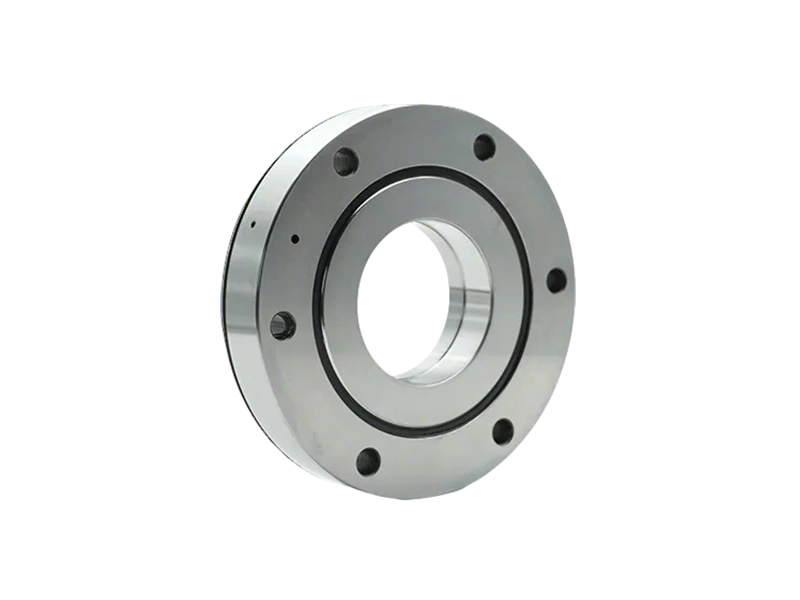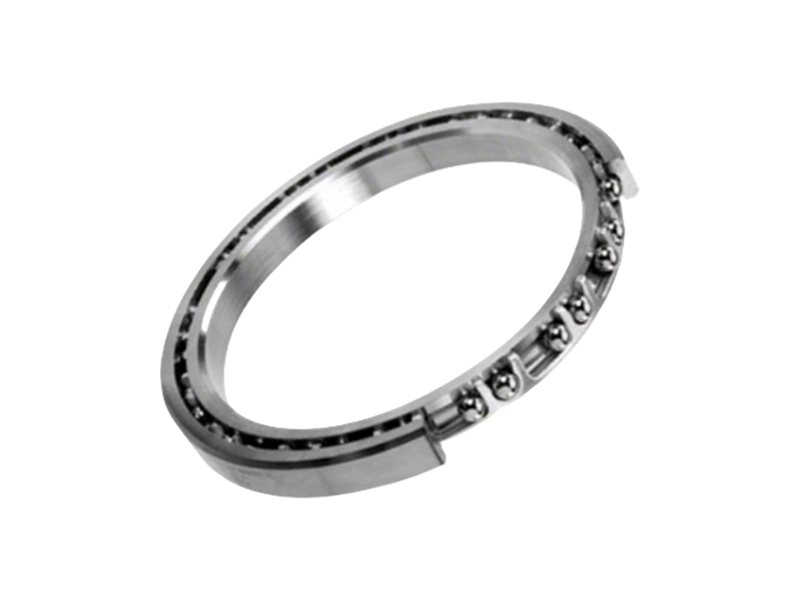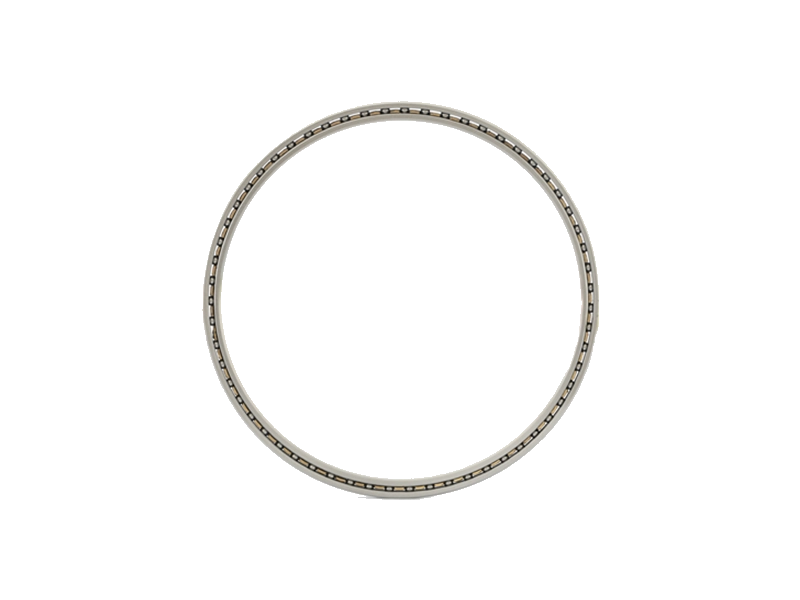Slewing bearings, also known as slewing rings or turntable bearings, are a type of large-diameter rotational bearing designed to handle a combination of heavy axial, radial, and tilting moment loads simultaneously. Their unique structure and capabilities make them essential components in a vast range of industries.The core function of a slewing bearing is to connect two large structural parts, allowing one to rotate smoothly and safely relative to the other.
Slewing Bearings Application Fields
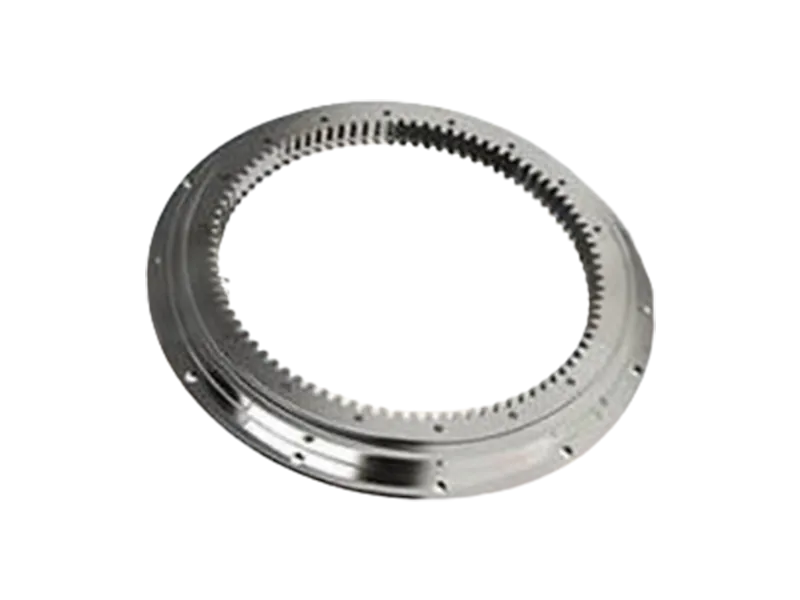
1. Construction & Heavy Machinery
This is the most traditional and widespread application field. The ability to handle immense loads and digging forces is critical here.
Excavators: The most iconic application. The slewing bearing connects the upper cab, engine, and arm (superstructure) to the undercarriage (tracks or wheels), allowing for 360-degree rotation.
Cranes (Mobile, Tower, Crawler, Deck): The bearing sits at the base of the crane's rotating superstructure, supporting the entire weight of the boom, counterweights, and the lifted load. It must handle enormous tilting moments.
Concrete Pumps: Allows the long distribution boom to slew (rotate) and pivot to precisely place concrete on construction sites.
Tunnel Boring Machines (TBMs): A massive main slewing bearing allows the cutter head to rotate while withstanding immense geological pressures.
Graders and Road Pavers: Used to position the blade or screed assembly.
Piling Rigs and Drill Rigs: Enables the rotation of the drilling mast and platform.
2. Renewable Energy
This is one of the fastest-growing and most demanding fields for high-performance slewing bearings.
Wind Turbines: This is a critical application with two primary uses:
Yaw Bearing: Located between the nacelle (the housing for the generator) and the tower. It allows the entire nacelle to rotate and face the wind for maximum efficiency.
Pitch Bearings (Blade Bearings): Found at the root of each turbine blade. They allow the blade's angle (pitch) to be adjusted to control rotational speed and for braking, withstanding huge aerodynamic loads.
3. Industrial & Manufacturing
Slewing bearings are crucial for automation and heavy material handling within industrial settings.
Industrial Robots: Form the primary rotating base (the "waist") of large, heavy-payload robotic arms, providing precise and repeatable motion.
Welding Positioners and Rotary Tables: Used to rotate heavy workpieces during welding, assembly, or machining processes.
Ladle Turrets in Steel Mills: Support and rotate enormous ladles filled with molten metal, operating in extreme heat and under heavy loads.
Stacker-Reclaimers: In mining and port logistics, these massive machines use a slewing bearing at the base of their boom to pile (stack) and retrieve (reclaim) bulk materials like coal or ore.
Bottling and Filling Machines: The large rotating carousels that move containers through filling, capping, and labeling stations are mounted on slewing bearings.
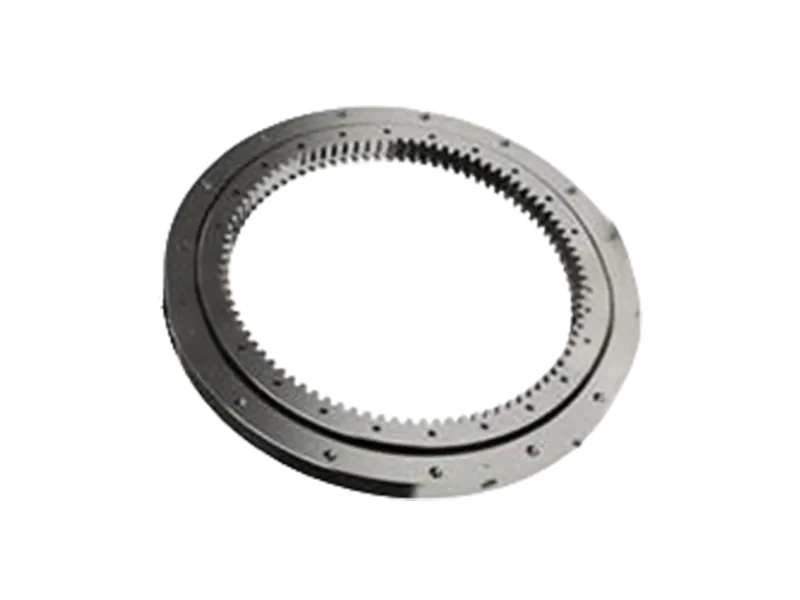
4. Marine & Offshore
These applications require robust bearings that can withstand harsh, corrosive environments.
Ship Loaders and Unloaders: Similar to stacker-reclaimers, these are used in ports to load and unload cargo from vessels.
Offshore Cranes: Installed on oil rigs and platforms for lifting equipment and supplies.
Mooring Systems: Used in single-point mooring (SPM) buoys, allowing a tanker or floating production storage and offloading (FPSO) unit to "weathervane" (rotate freely with wind and current) around the mooring point.
Propulsion Systems: Used in azimuthing thrusters and pods, which can be rotated 360 degrees to provide propulsion and steering for ships.
5. Medical Technology
Precision, smoothness, and quiet operation are paramount in these applications.
CT Scanners and MRI Machines: The rotating gantry, which houses the X-ray source and detectors, is mounted on a high-precision slewing bearing. This allows it to rotate smoothly and quietly around the patient.
Gamma Knife Radiosurgery Machines: Used for the precise positioning of the radiation source.
Surgical Robots: Slewing rings can be found in the joints of large surgical robotic arms.
6. Aerospace & Defense
These applications demand high reliability, precision, and performance under extreme conditions.
Radar and Antenna Pedestals: Allow large radar dishes and satellite antennas to rotate and tilt to track aircraft, satellites, or celestial objects. Smooth, continuous rotation is key.
Tank Turrets and Gun Mounts: The bearing allows the tank's turret to rotate 360 degrees quickly and reliably, even while withstanding the shock of firing.
Telescope Mounts: Provide the smooth, precise rotational movement needed for astronomical observation.
Airport Scanners: The rotating mechanisms in baggage scanning systems.
7. Miscellaneous Applications
Slewing bearings are versatile and appear in many other areas.
Amusement Park Rides: Used as the central rotating mechanism for Ferris wheels, carousels, and other spinning rides.
Theatrical Stages: Enable revolving stages for dynamic set changes.
Logging Equipment: Machines like feller bunchers and harvesters use slewing bearings in the same way as excavators to rotate the cab and cutting tools.
Summary: Why are Slewing Bearings so Widely Used?
Slewing bearings are the ideal solution for any application that needs to:
Support a heavy structure.
Allow for slow, intermittent, or continuous rotation.
Handle a combination of axial, radial, and tilting moment loads.
Provide a compact design, often replacing a much more complex system of multiple bearings and a kingpin.
Offer an open center for passing hydraulic lines, electrical cables, or other services.
Integrate a drive mechanism, as most slewing bearings can be manufactured with internal or external gear teeth.
These are just a few examples of the diverse applications of slewing bearings. Their ability to handle heavy loads and facilitate controlled rotation makes them essential components in various industries where rotational movement and load-bearing capacity are required.
 XRT Series Crossed Tapered Roller Bearings
XRT Series Crossed Tapered Roller Bearings XV Series Crossed Cylindrical Roller Bearing
XV Series Crossed Cylindrical Roller Bearing XRU Crossed Roller Bearings
XRU Crossed Roller Bearings XRSU Crossed Roller Bearings
XRSU Crossed Roller Bearings XRE Crossed Roller Bearings
XRE Crossed Roller Bearings XRC Crossed Roller Bearings
XRC Crossed Roller Bearings XRBH Crossed Roller Bearings
XRBH Crossed Roller Bearings XRB Crossed Roller Bearings
XRB Crossed Roller Bearings Ultra Thin XRBS Crossed Roller Bearings
Ultra Thin XRBS Crossed Roller Bearings Ultra Thin XRA-C Crossed Roller Bearings
Ultra Thin XRA-C Crossed Roller Bearings Ultra Thin XRA Crossed Roller Bearings
Ultra Thin XRA Crossed Roller Bearings XRBC Crossed Roller Bearings
XRBC Crossed Roller Bearings
























